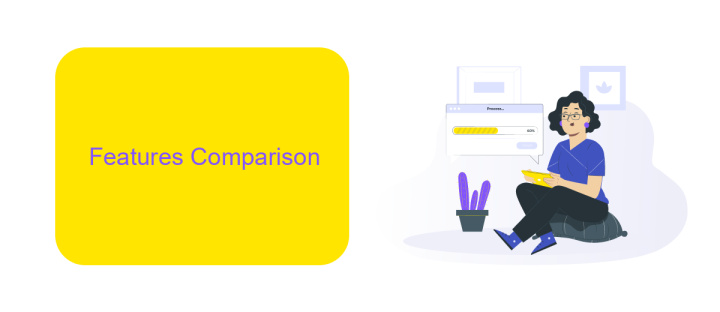Sap RPA Vs UiPath
In the rapidly evolving landscape of robotic process automation (RPA), two prominent players, SAP RPA and UiPath, have emerged as leaders. This article delves into a comparative analysis of these powerful tools, exploring their features, capabilities, and use cases. By examining their strengths and weaknesses, we aim to provide insights that help organizations choose the best solution for their automation needs.
Introduction
Robotic Process Automation (RPA) has become a cornerstone in modern enterprises, streamlining repetitive tasks and enhancing operational efficiency. SAP RPA and UiPath are two leading platforms in this domain, offering robust solutions to automate business processes. Both platforms boast unique features and capabilities, making them suitable for different organizational needs.
- SAP RPA: Seamlessly integrates with SAP environments, ideal for organizations heavily invested in SAP software.
- UiPath: Known for its user-friendly interface and extensive integration options, suitable for a wide range of applications.
- Integration Services: Tools like ApiX-Drive can further simplify the integration process, enabling seamless connectivity between disparate systems.
Choosing between SAP RPA and UiPath depends on various factors, including existing IT infrastructure, specific automation requirements, and budget constraints. This article aims to provide a comprehensive comparison to help you make an informed decision, ensuring that your organization leverages the full potential of RPA technology.
Features Comparison

SAP RPA and UiPath both offer robust automation solutions, but they differ in several key features. SAP RPA is deeply integrated with SAP's ecosystem, providing seamless automation for SAP applications and processes. It offers a user-friendly interface, making it easier for SAP users to design and deploy bots without extensive programming knowledge. On the other hand, UiPath excels in its versatility and broad applicability across various industries and platforms. It supports a wide range of third-party applications and has a rich set of features for advanced automation, including AI and machine learning capabilities.
When it comes to integration, UiPath offers more flexibility with its extensive library of connectors and APIs, enabling smoother integration with non-SAP systems. Services like ApiX-Drive can further enhance this capability by providing easy-to-use tools for setting up integrations between UiPath and other platforms. SAP RPA, while highly efficient within the SAP environment, may require additional effort for integrations outside its ecosystem. Overall, the choice between SAP RPA and UiPath depends on the specific needs and existing infrastructure of the organization.
Pricing Comparison

When comparing the pricing of SAP RPA and UiPath, it's essential to consider the different pricing models and what each platform offers in terms of value for money. Both platforms provide scalable solutions, but their pricing structures vary significantly.
- SAP RPA: SAP RPA typically offers a subscription-based pricing model, which can be tailored based on the number of bots and the scale of deployment. This can be advantageous for large enterprises already using other SAP solutions, as it may integrate seamlessly with existing SAP infrastructure.
- UiPath: UiPath provides a more flexible pricing approach, including a free tier for small businesses and individual developers. Their pricing scales with the number of robots and the complexity of automation tasks, making it suitable for both small and large enterprises.
Overall, the choice between SAP RPA and UiPath may depend on your specific business needs and existing software ecosystem. For businesses looking to integrate various applications seamlessly, services like ApiX-Drive can be invaluable, offering streamlined integration processes that enhance the capabilities of both SAP RPA and UiPath. Evaluating the total cost of ownership and the potential return on investment is crucial for making an informed decision.
Pros and Cons

When comparing SAP RPA and UiPath, it's essential to understand their strengths and weaknesses. Both platforms offer robust automation solutions but cater to different needs and preferences.
SAP RPA is specifically designed for SAP environments, providing seamless integration with SAP systems. On the other hand, UiPath is a more versatile tool that supports a wide range of applications and systems.
- Pros of SAP RPA: Tailored for SAP systems, high integration capabilities, user-friendly for SAP users.
- Cons of SAP RPA: Limited to SAP environments, less flexibility with non-SAP systems.
- Pros of UiPath: Broad application support, extensive community and resources, powerful AI capabilities.
- Cons of UiPath: Steeper learning curve, higher cost for advanced features.
For businesses heavily reliant on SAP, SAP RPA offers a streamlined solution. However, for those requiring broader automation across various platforms, UiPath is a more flexible choice. Tools like ApiX-Drive can further enhance integration capabilities, making it easier to connect different systems and automate workflows efficiently.
Conclusion
In conclusion, both SAP RPA and UiPath offer robust solutions for automating business processes. SAP RPA is deeply integrated with SAP ecosystems, making it an ideal choice for businesses that heavily rely on SAP applications. On the other hand, UiPath offers a more versatile platform with a wide range of integrations and user-friendly features, suitable for various industries and use cases.
Choosing between SAP RPA and UiPath ultimately depends on your specific business needs and existing technological infrastructure. For organizations looking to streamline their SAP-centric operations, SAP RPA provides seamless integration and specialized functionalities. Meanwhile, UiPath's extensive capabilities and broad compatibility make it a strong contender for businesses seeking flexibility and scalability. Additionally, tools like ApiX-Drive can further enhance integration efforts, ensuring smooth data flow between different systems and maximizing the efficiency of your automation strategies.


FAQ
What are the main differences between SAP RPA and UiPath?
Which tool is easier to use for beginners?
Can both SAP RPA and UiPath be used together?
How do these tools handle integration with non-SAP systems?
What are the options for automating workflows that involve multiple systems?
Apix-Drive is a universal tool that will quickly streamline any workflow, freeing you from routine and possible financial losses. Try ApiX-Drive in action and see how useful it is for you personally. In the meantime, when you are setting up connections between systems, think about where you are investing your free time, because now you will have much more of it.

